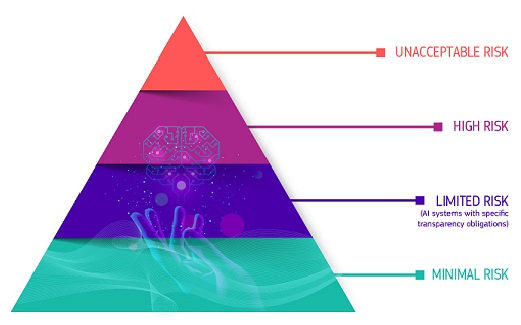AI's Double-Edge: When Biometric Predictions Become Security Vulnerabilities
In today's rapidly evolving technological landscape, artificial intelligence has become deeply integrated into our security systems, particularly in the realm of biometric authentication. While these advances offer unprecedented convenience and security measures, they also present significant vulnerabilities that deserve our careful attention.

The Rise of AI-Powered Biometric Systems
The integration of AI in biometric security has revolutionized how we verify identities and protect sensitive information. From facial recognition to fingerprint scanning, these systems have become increasingly sophisticated, offering seamless authentication experiences across various platforms. According to recent developments, the market for AI-powered biometric solutions has seen exponential growth, with implementations spanning from smartphone security to national border control systems.
Understanding the Vulnerabilities
However, this technological advancement comes with inherent risks. Recent research has identified several critical vulnerabilities in AI-based biometric systems:
Deepfake Attacks: Advanced AI algorithms can now generate highly convincing synthetic biometric data, potentially fooling security systems.
Data Privacy Concerns: The storage and processing of biometric information create potential targets for cybercriminals.
Algorithm Bias: AI systems may exhibit inherent biases based on their training data, leading to discrimination and false positives/negatives.

Regulatory Response and Compliance
The European Union has taken significant steps to address these challenges through the AI Act, the world's first comprehensive AI regulation. The legislation specifically addresses:
- Real-time biometric identification systems
- Data protection requirements
- Algorithmic transparency
- Mandatory security assessments
Organizations must now ensure their AI-powered biometric systems comply with these regulations while maintaining effective security measures.
Emerging Threats and Countermeasures
Current Threat Landscape
The World Economic Forum reports that AI-driven cybercrime has surged significantly in 2025, with sophisticated attacks targeting biometric systems becoming increasingly common. Cybercriminals are leveraging advanced AI tools to:
- Generate synthetic biometric data
- Exploit system vulnerabilities
- Conduct large-scale identity theft operations
Security Solutions
To combat these emerging threats, organizations are implementing multi-layered security approaches:
- Liveness Detection: Advanced algorithms that can distinguish between real and synthetic biometric data
- Multi-factor Authentication: Combining biometrics with other authentication methods
- Encrypted Storage: Secure encryption of biometric templates
- Regular Security Audits: Continuous monitoring and assessment of system vulnerabilities
Best Practices for Organizations
To maintain robust security while leveraging AI-powered biometric systems, organizations should:
- Implement Regular Updates: Keep all security systems and algorithms current with the latest patches and improvements
- Conduct Thorough Testing: Regularly test systems for vulnerabilities and potential exploits
- Train Staff: Ensure all personnel understand security protocols and best practices
- Maintain Compliance: Stay updated with regulatory requirements and industry standards
- Invest in Research: Continuously explore new security measures and technologies
Future Implications
The future of AI-powered biometric security will likely see:
- Enhanced integration of quantum computing for improved encryption
- Development of more sophisticated anti-spoofing measures
- Greater emphasis on privacy-preserving authentication methods
- Increased focus on ethical AI development
Conclusion
While AI-powered biometric systems offer powerful security solutions, organizations must remain vigilant about potential vulnerabilities. Success in this domain requires a balanced approach that combines technological innovation with robust security measures and regulatory compliance.
Ready to enhance your cybersecurity knowledge? Explore our comprehensive courses and resources at 01TEK to stay ahead in the rapidly evolving world of AI and biometric security. Visit www.01tek.com to learn more about our specialized training programs and certification courses.
Sources: [1] Biometrics Institute - US Strategy Forum 2025 [2] World Economic Forum - AI-driven Cybercrime Report [3] EU AI Act Framework [4] ENISA Cybersecurity Report 2025 [5] FTC Biometric Information Guidelines
A poorly implemented feature hurts more than not having it at all.
Noah Everett, founder of Twitpic



